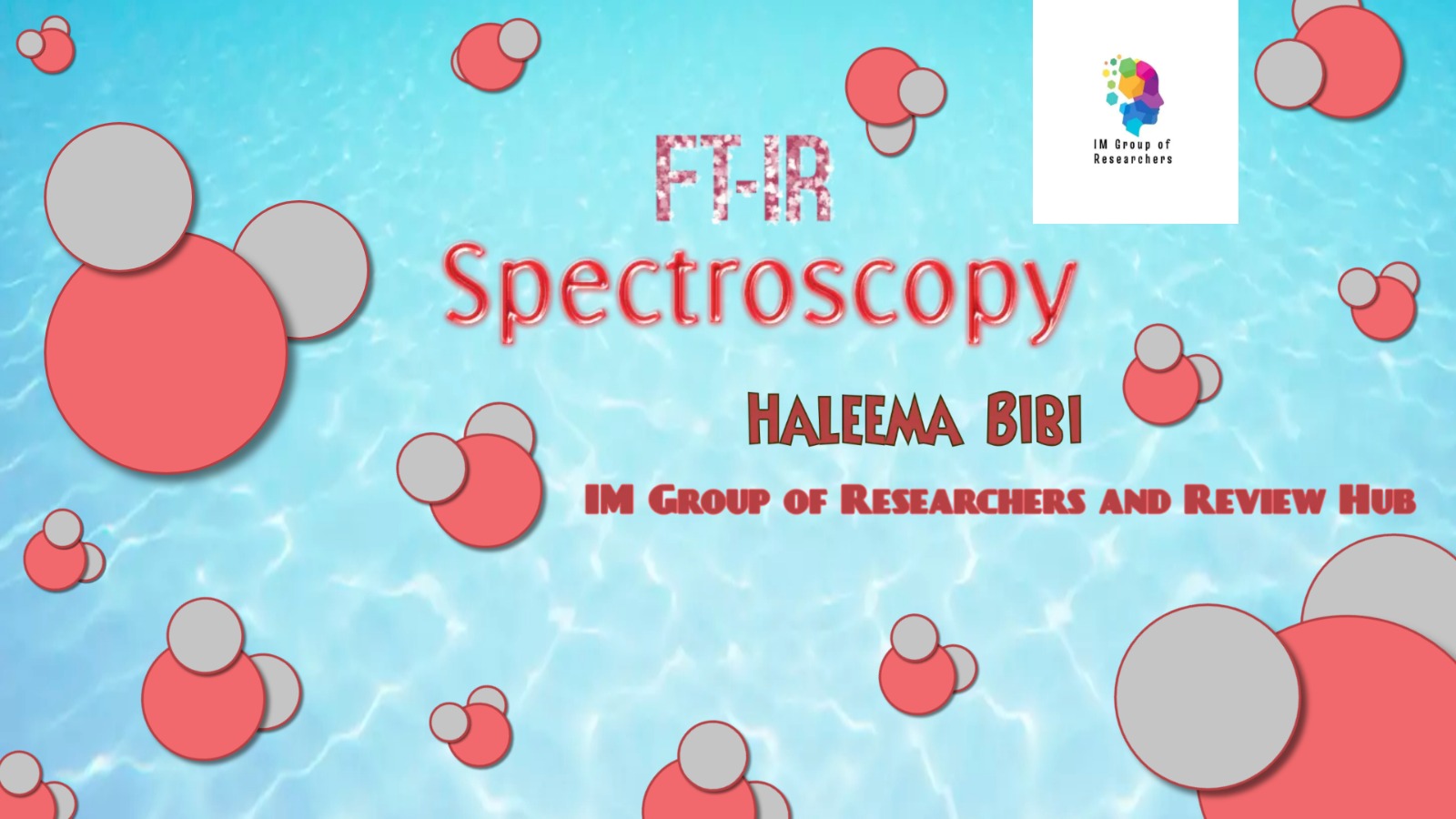Taking a look at Fourier Transform Infrared (FT-IR) spectroscopy is like trying to figure out the complex molecular vibrational orchestra. Understanding into the precision of science in this topic, exploring the spectrum refinements, functional complexities, and the significant role of FT-IR in revealing the molecular stuff of our research.
Author: Haleema Bibi
FT-IR Spectroscopy’s Functions Include
Identify FT-IR spectroscopy as a molecular storyteller that reveals the distinct story hidden in each chemical bond’s vibrational signature. Beyond its use as an analytical instrument, FT-IR transforms into a scientific partner that helps us identify and characterize compounds with unparalleled accuracy.
Different Regions of FT-IR Spectrum
Think of the FT-IR spectrum as the color scheme of a masterwork of molecules. The convergence of the near-infrared (NIR), mid-infrared (MIR), and far-infrared (FIR) bands produces a striking representation that provides delicate insights into the vibrational symphony of molecules as they excite to the beat of energy absorption.
What Use Does FT-IR Spectroscopy Serve?
Beyond its practical use, FT-IR spectroscopy develops a reliable scientific tool for investigating chemical reactions, identifying functional groups, and elucidating molecular structures. Applications for it can be found in many fields of science, including quality control, forensic analysis, and pharmaceutical research.
How to Run FT-IR Spectroscopy?
The mirrors basically perform the duty fitted in the FT-IR machine. Sample preparation is the meticulous placement in the spectrometer, and the succeeding recording of the resulting spectrum unfold as a precisely designed routine. The integration of Fourier transforms technology acts as the conductor, arranging rapid and precise data acquisition.
Type of Data/Signals Provided by FT-IR Spectroscopy
Envision the FT-IR spectrum as a scientific reference book inscribed in peaks, each articulating a unique vibrational mode of molecular bonds. The particular interpretation of this language provides scientists with invaluable insights into the intricate chemical structure and composition of the sample.
Why Use FT-IR for Chemical Samples?
FT-IR spectroscopy assumes the role of a concerned investigator for chemical samples, providing an avenue for analysis without disturbing their natural states. This non-destructive approach, coupled with heightened sensitivity, it an invaluable assistant for studying the intricate gradations of both liquid and solid samples.
Samples Analyzed by FT-IR
Within the laboratory, liquids and solids become leading of our scientific narrative. From straightforward liquid samples to the more complex solid counterparts, FT-IR accommodates a diverse range, employing techniques such as attenuated total reflection (ATR) or potassium bromide (KBr) pellet preparation for a comprehensive analysis.
Benefits of FT-IR Spectroscopy
The benefits of FT-IR spectroscopy expand as a scientific help – rapid analysis, heightened sensitivity, and applicability to complex mixtures. In both qualitative and quantitative analyses, it as an indispensable tool in the expansive toolkit of researchers and industry professionals, weaving into the fabric of scientific exploration.
Limitations of FT-IR Spectroscopy
In the spirit of science, FT-IR spectroscopy encounters limitations. Challenges may arise in the analysis of highly opaque samples or those with overlapping absorption bands. The art of accurate interpretation necessitates, guiding us through potential complexities as we navigate the molecular symphony.
In conclusion, FT-IR spectroscopy excels its designation as a technique, emerging as a scientific companion on our everlasting pursuit to comprehend the intricate language of molecules. As technological frontiers expand, the resonance of FT-IR’s contributions are controlled to amplify, solidifying its status as a pivotal component in the scientific symphony of analytical chemistry.
Also read: Chemical Education through Electronic Media
Follow Us on

